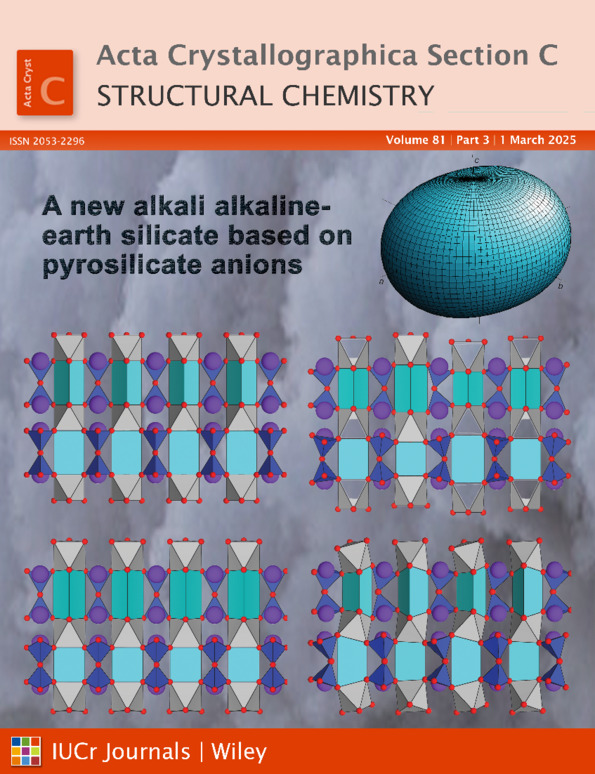Magnesium and potassium scorpionate complexes based on dihydrobis(pyrazolyl)borate
Abstract
The first X-ray crystal structure is reported for [dihydrobis(pyrazol-1-yl)borato-κ2N,N′]tris(tetrahydrofuran-κO)magnesium(II) tetrabenzylborate, [Mg(C6H8BN4)(C4H8O)3][B(C7H7)4)], (I), which was obtained by reacting crude [K(C6H8BN4)] with an equimolar amount of (PhCH2)MgCl in tetrahydrofuran at room temperature and was isolated as a side product. The crystal structure analysis reveals the existence of a pronounced boat-shaped central Mg(N–N)2B moiety with a weak pseudo-axial B—H…Mg interaction. The existence of a novel counter-ion, [B(C7H7)4)]−, has been demonstrated by the first evidence of reactivity between KBH4 and (PhCH2)MgCl (in a 1:4 molar ratio) to give a polymeric potassium tetrabenzylborate, poly[[μ4-dihydrobis(pyrazol-1-yl)borato-κ2N,N′]potassium(I)], [K{B(C7H7)4}]n, (II), with predominant (η6-C6H5)…K, and (η3-C6H5)…K interactions. Density functional theory (DFT) calculations were conducted to determine the energy, the frontier molecular orbitals (HOMO and LUMO) and the molecular electrostatic potential (MEP) in order to explain the stability of the structures in the experimental results for complexes (I) and (II).




